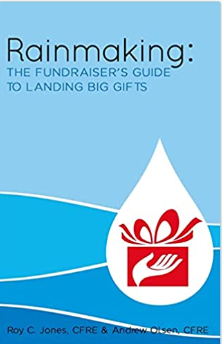Most organizations use “ask handles” (sometimes called an “ask table”) in order to do upgrade giving through their direct mail fundraising.
When the economy is good most charities will use the donor’s previous highest gift to calculate the three or four ask amounts in the gift array on the reply device in the letter. In short, the donors previous highest contribution (HPC) is the lowest amount you would ask for… the subsequent amounts might be: HPC; HPCx1.5; HPCx2; and Other.
When the economy is sagging, LIKE NOW, most not-for-profits use the donor’s last gift or average gift as the base to calculate the gift array. This tends not to upgrade too quickly and in most cases upgrades giving more gradually by simply lifting average giving.
Now for the question, “Is a gift array strategy the only tool you should use to upgrade donor participation?”
The obvious answer is “NO”.
You must do more in this economy to identify and harvest major gifts from your donor file. I am a big proponent of identifying “asks” around your programs existing program. Review your budget, analyze your program and look at every expense. Then repackage your programs and projects around the natural giving clusters that form around specific amounts in order to benchmark giving.
I compare it to having “rungs on a ladder”. You need to have $5,000 asks, $10,000 asks, $25,000, $50,000 and $100,000. With no rungs or levels between entry level giving and estate gifts it is almost impossible to take donors to the top of the giving pyramid.
Donors truly climb the ladder in their giving from one year to the next. It is extremely rare for a new donor to pull out their check book and write you a check for $100,000. Major donors are investors by nature. They will give you $5,000 and then measure your stewardship and impact. If you do well, their next gift could be $10,000 to $25,000. If you do poorly in reporting your impact it will likely be their last gift you get.
How do you find $1 million donors? By building a base of 6-figure donors that you are demonstrating impact from one
year to the next. How do you get $100,000 donors by demonstrating the best return on investment for their gifts at $10,000, $25,000 and $50,000. Donors move up the ladder from one year to the next as you ask for more and demonstrate that you have been a good steward with their previous gifts.



